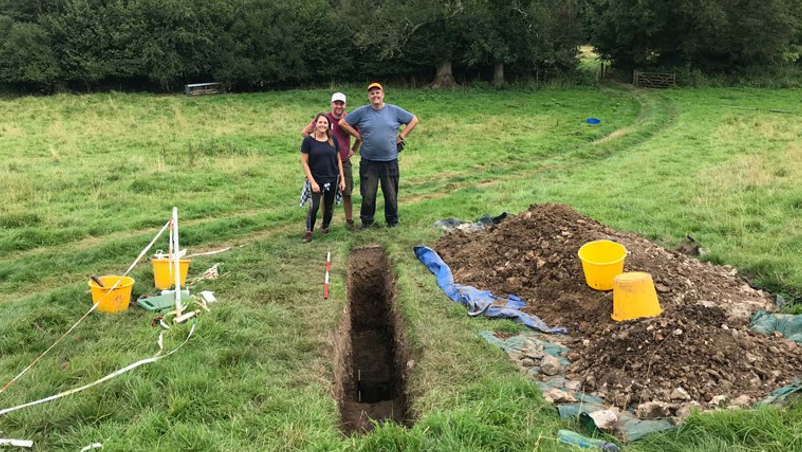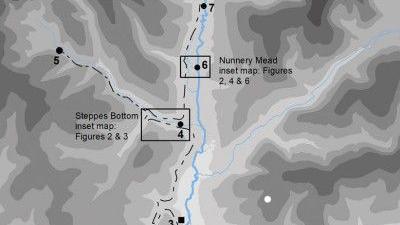How did a 2,000-year-old Roman aqueduct grow by 2km?

The Bournemouth University excavation team (L-R) Sarah Elliott, Harry Manley and Mark Johnson
- Published
Archaeologists have discovered one of the longest and most studied aqueducts in the country is actually even longer than originally thought.
A team from Bournemouth University (BU) has said it has "conclusively mapped" the source of the Dorchester aqueduct for the first time.
The aqueduct, first built almost 2,000 years ago, was a vital part of Roman life in the Dorset town, supplying water for its public baths, fountains and wealthy households.
Now the BU team has established it is in fact just over a mile (2kms) longer than first estimated.
Harry Manley, from BU's department of life & environmental sciences, said: “This aqueduct has been investigated by archaeologists for over a century.
“Despite extensive examinations in the 1990’s, the source of its water and the upper sections of its course have never been conclusively mapped, until now.”
Earlier studies had suggested the source of the aqueduct, which followed a winding 12.4 mile (20km) route up the Frome valley northwest of Dorchester, was a lake in Steppes Bottom.
However, thanks to the BU team, it has been discovered that its route actually headed further upstream to the village of Notton on the river Frome.

Earlier studies had suggested the source of the aqueduct was a lake in Steppes Bottom
Mr Manley began his research by studying publicly available lidar data, where 3D maps of terrain are created using a laser beamed from a plane.
The data allowed him to trace the elevation and physical features of the land upstream of Steppes Bottom.
He then compared that data to a survey carried out by the university during a previous study at Frampton Villa, which lies further along the newly identified route, near Nunnery Mead.
He said: “The geophysical survey revealed signs of a narrow channel running northwest to southeast. This matched up with my findings from the lidar data, so it seemed like the smoking gun that proved the aqueduct ran through the area.”
To confirm the presence of the waterway, the BU team carried out a ground-penetrating radar survey and followed up with a small excavation, during which they found evidence of the aqueduct channel.
“For the citizens of Dorchester to have this aqueduct constantly providing them with fresh water would have been a matter of civic pride," Mr Manley said.
"Understanding more about how it was constructed and maintained, and where it began, adds further detail to this vital aspect of Roman life.”
Get in touch
Do you have a story BBC Dorset should cover?
You can follow BBC Dorset on Facebook, external, X (Twitter), external, or Instagram, external.